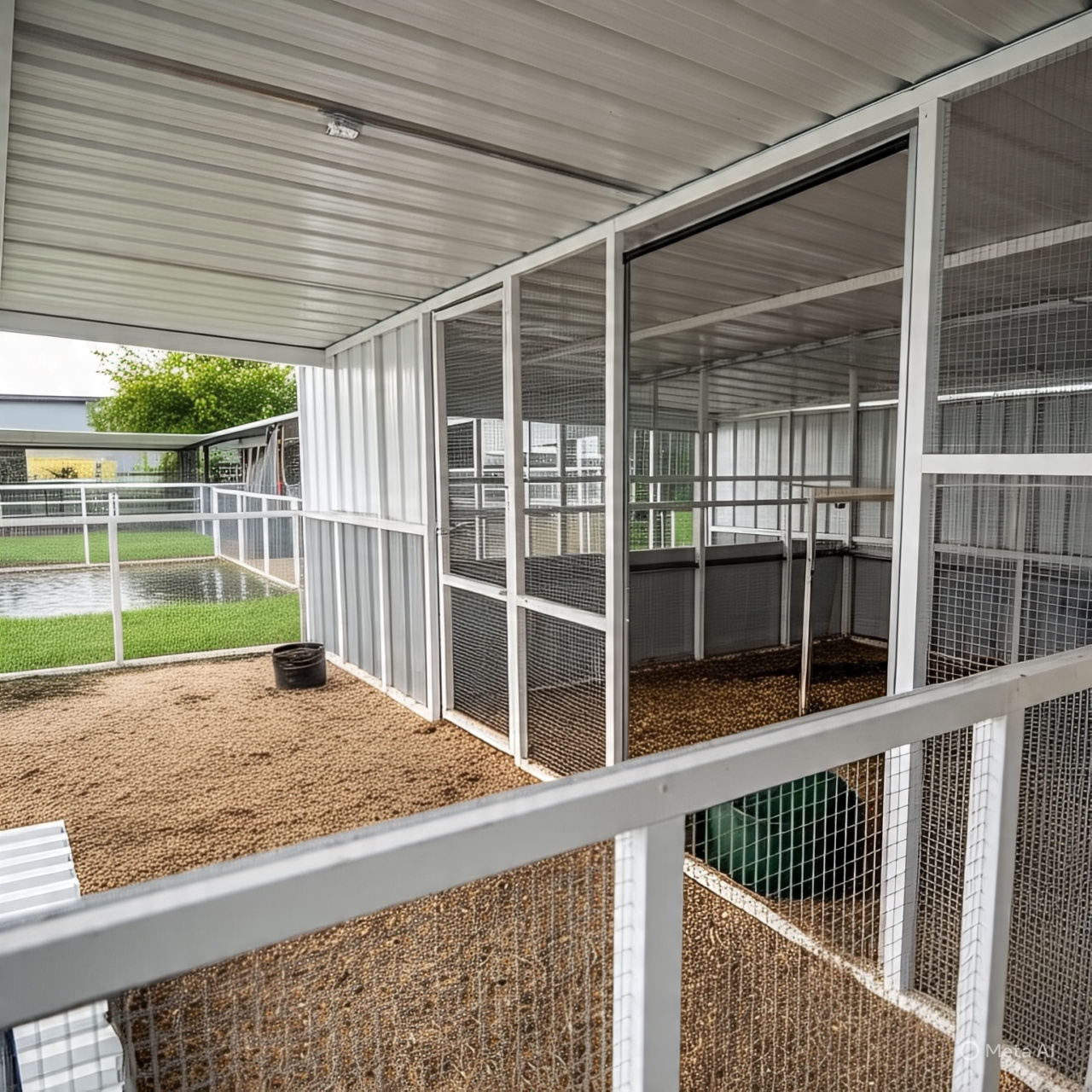Poultry Housing: What You Need to Know
If you're thinking about starting a poultry farm—or you're already knee-deep in feathers and feed—you’ve probably heard the phrase: “Good housing makes good poultry.” And it’s true. Whether you’re raising chickens for eggs or meat, how and where they live plays a major role in their health, productivity, and your profit.
In this post, we’ll walk you through everything you need to know about poultry housing—from choosing the right type of shelter to key design features you shouldn’t overlook.
Why Poultry Housing Matters
Poultry housing isn’t just about putting up walls and a roof. It’s about creating the right environment for your birds to thrive. Proper housing:
📍 Protects birds from predators and harsh weather
📍 Helps maintain the right temperature and ventilation
📍 Reduces disease risk and improves hygiene
📍 Makes feeding and egg collection easier
📍 Enhances overall productivity
In short: good housing = healthy birds = better returns.
Types of Poultry Housing Systems
There are different systems of housing, and the best choice depends on your scale, budget, and purpose. Here are the most common types:
1. Deep Litter System
One of the most popular systems for small to medium-scale farms. Birds are kept on a floor covered with absorbent bedding material (like wood shavings or straw). The litter is changed periodically.
Pros:
1.Cost-effective
2.Encourages natural behavior
3.Ideal for egg-laying and broilers
Cons:
1.Regular cleaning required
2.Higher risk of disease if not managed well
2. Battery Cage System
Birds are kept in individual or group cages, often used in commercial layer farms.
Pros:
1.Efficient use of space
2.Easier egg collection
3.Lower disease risk
Cons:
1.Higher startup cost
2.Limited bird mobility (may raise ethical concerns)
3. Free-Range System
Birds are allowed to roam outdoors during the day but housed securely at night.
Pros:
1.Healthier and happier birds
2.Premium market demand for free-range eggs/meat
Cons:
1.Requires more land
2.Birds are exposed to predators and weather changes
Key Features of a Good Poultry House
No matter the system, every poultry house should meet these essential criteria:
1. Ventilation
Fresh air is a must. Poor airflow can lead to heat stress and respiratory issues. Use windows, vents, or fans to ensure steady airflow without causing drafts.
2. Lighting
Natural daylight is ideal, but artificial lighting can be added to regulate laying cycles. For layers, a minimum of 14–16 hours of light per day is recommended.
3. Temperature Control
Chickens are sensitive to extreme temperatures. Insulation, proper roofing, and fans or heaters (if needed) can help maintain an optimal range—between 18°C to 24°C for most breeds.
4. Space Allocation
Overcrowding leads to stress, poor growth, and diseases. Follow these general guidelines:
Broilers: 1 sq. ft. per bird
Layers: 1.5–2 sq. ft. per bird
5. Sanitation and Drainage
Clean water, dry litter, and easy-to-clean surfaces prevent disease buildup. Design your floor with a slight slope to allow for proper drainage.
6. Security
Predators are a real threat. Use sturdy fencing and secure doors. A raised foundation can also keep out rats and snakes.
Budgeting for Poultry Housing
You don’t have to break the bank to build effective housing, but it’s smart to plan for:
🏡 Building materials (wood, metal, mesh)
🚰 Feeders and drinkers
💡 Lighting and fans
✨ Litter or bedding
✨ Routine maintenance costs
Tip: Start small, then scale as your farm grows.
Common Mistakes to Avoid
1.Ignoring ventilation: leads to respiratory problems and heatstroke.
2.Overcrowding: more birds don’t always mean more profit.
3.Neglecting biosecurity: always have foot dips and hand sanitizers for visitors.
4.Skipping regular cleaning: dirty houses breed diseases fast.
Final Thoughts
Good poultry housing isn’t just a structure—it’s an investment in the health of your flock and the success of your poultry business. Whether you're starting a backyard coop or planning a commercial setup, take time to get the basics right.
Remember, your birds will spend their entire lives in that space. Make it safe, clean, and comfortable—and they’ll reward you in kind.

